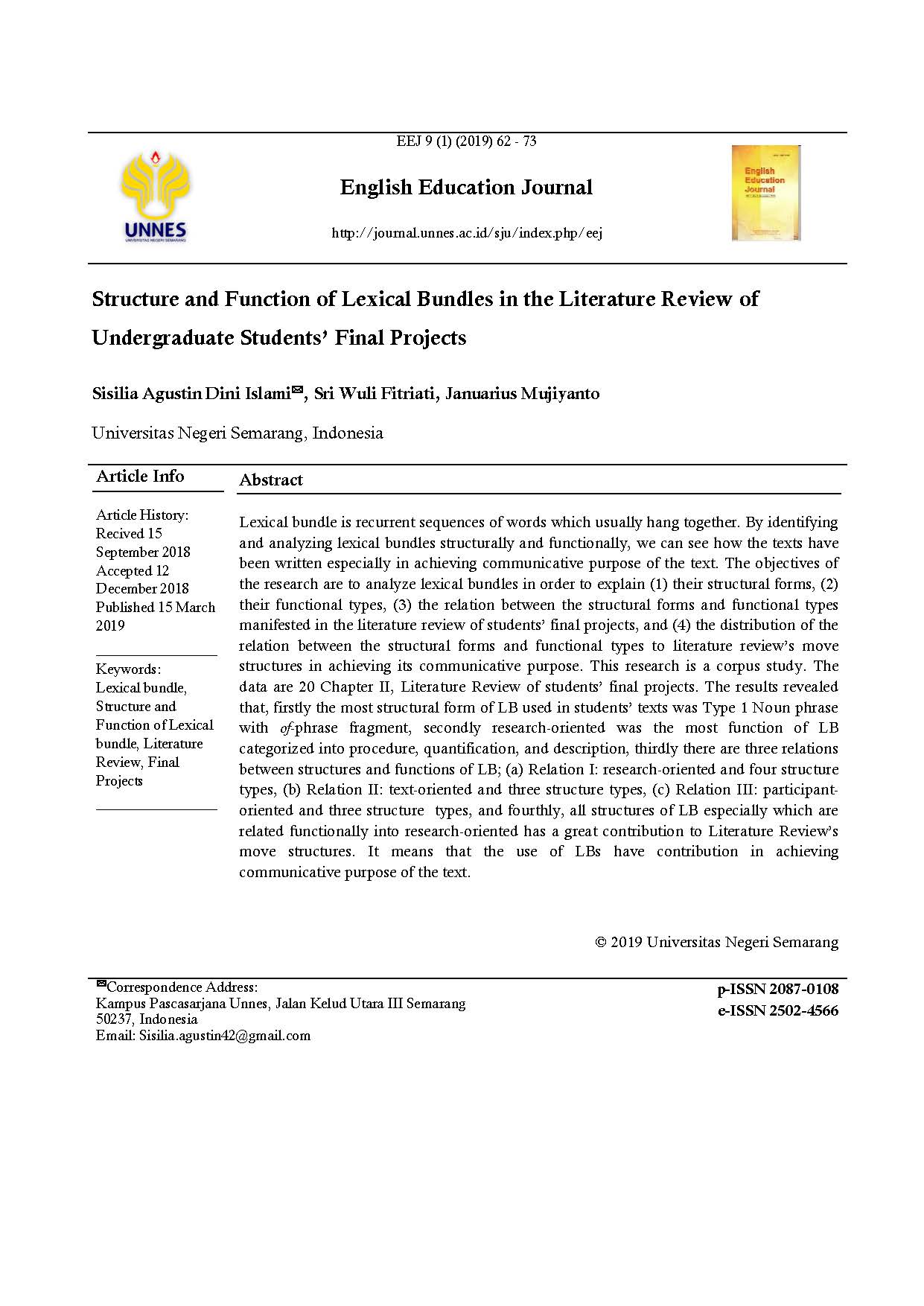Structure and Function of Lexical Bundles in the Literature Review of Undergraduate Students’ Final Projects
##plugins.themes.academic_pro.article.main##
Abstract
Lexical bundle is recurrent sequences of words which usually hang together. By identifying and analyzing lexical bundles structurally and functionally, we can see how the texts have been written especially in achieving communicative purpose of the text. The objectives of the research are to analyze lexical bundles in order to explain (1) their structural forms, (2) their functional types, (3) the relation between the structural forms and functional types manifested in the literature review of students’ final projects, and (4) the distribution of the relation between the structural forms and functional types to literature review’s move structures in achieving its communicative purpose. This research is a corpus study. The data are 20 Chapter II, Literature Review of students’ final projects. The results revealed that, firstly the most structural form of LB used in students’ texts was Type 1 Noun phrase with of-phrase fragment, secondly research-oriented was the most function of LB categorized into procedure, quantification, and description, thirdly there are three relations between structures and functions of LB; (a) Relation I: research-oriented and four structure types, (b) Relation II: text-oriented and three structure types, (c) Relation III: participant-oriented and three structure types, and fourthly, all structures of LB especially which are related functionally into research-oriented has a great contribution to Literature Review’s move structures. It means that the use of LBs have contribution in achieving communicative purpose of the text.
